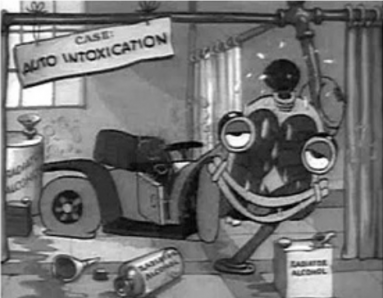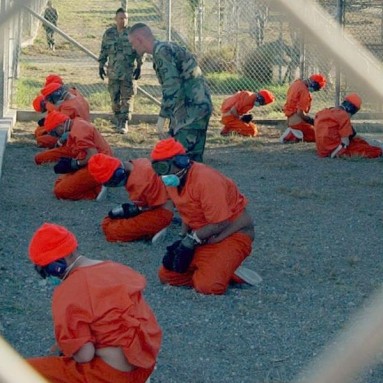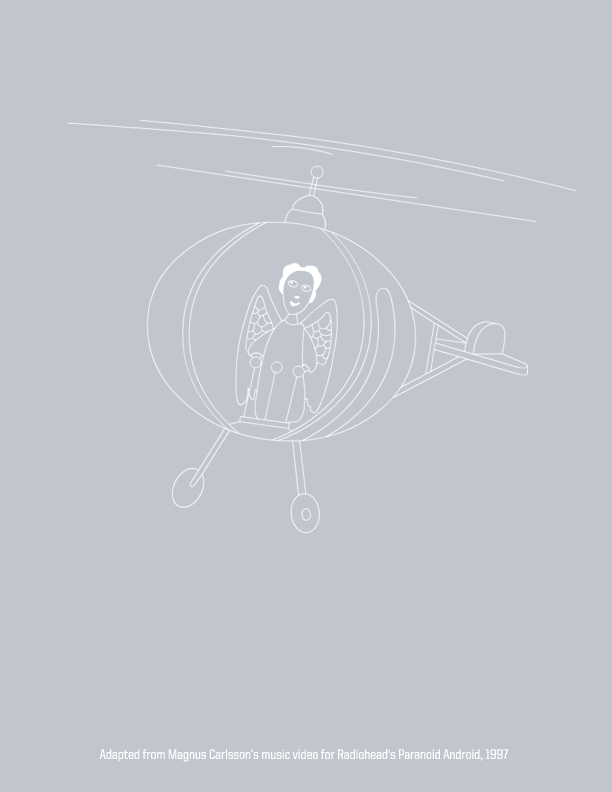"Eric Holder and the drones... sounds like a band, right?" —Jacob Appelbaum, n+1
1. "Paranoid Android," Radiohead
2. "Ghetto Birds," Ice Cube (Wish I had a genie with about three wishes / Metal flake green on D's I look suspicious)
3. "Remote Control," Trans Am
4. "N****s in Poorest," Yasiin Bey (There's birds of prey, no escape / Open-air prison, local zoo)
5. "Drone," Panda Bear (Now I see you again / Now I feel you again / Now I know you again)
6. "Slo Drone," Lee Ranaldo
7. "All the Clocks are Broken," Cop Shoot Cop (I'm looking through one glass eye / You can't see me now / But I'm watching over you)
8. "Nightmare Air," Enemymine
9. "Look Into the Air," Explosions in the Sky (Instrumental)
10. "Paranoid Chant," Minuteman
11. "Swarm Reigns (Down)," Isis (We are the sleepers / Swarm contained in her tower / We mesh our flesh and bone / With her mechanical mind)
12. "Exterminating Angel," Secret Chiefs 3
13. "Valley Of The Blind," Nomeansno (I saw a mushroom cloud / I took a rocket's ride / And the flash of the blast really opened my eyes / I went, "Boom doom," I've been living in a dream / Now I'm washing my hands / Will they ever come clean?)
14. "Drones Over BKLN," El-P
15. "Freedom Machine," Junior Brown (My own little freedom machine)
16. "Like A Droid To The Slaughter," Replikants
17. "Message Received," Unwound (Logic signal gone complete / It's an invitation to an infiltration / Message received from the enemy / Remote planet fell nowhere / It's an invitation to an infiltration / Message received from the enemy / Present chaos does not compute / It's an invitation to an infiltration / Message received from the enemy)
18. "Drone," Jawbreaker
19. "Dropped from the Sky," Amon Tobin (Instrumental)
20. "Above Me," Guntruck (It's all right, I'm doing fine / As long as you're above me / It's OK, I'm doing fine / As long as I'm below you)
“People are a lot more comfortable with a Predator strike that kills many people than with a throat-slitting that kills one. [But] mechanized killing is still killing.”
— Vicki Divoll, former CIA attorney
“Off with his head, man.”
— Radiohead, “Paranoid Android”
Before they were raining down from a great height as self-contained guillotines in aerial suspension, they had a noncombatant history. Archytus, the founder of mathematical mechanics, sent the Pigeon into the air in 350 B.C.E. The unmanned steam-powered object made a complete 200-meter flight, a self-propelled device channeling the programmer’s ingenuity and seemingly making it the machine’s own.
Characteristically, neither device pleased Archytus’s close friend Plato, who grumbled that God was the only true geometer. Aristotle, a proponent of liberation robotics, recorded a reaction to Archytas’s Pigeon: “The bird was apparently suspended from the end of a pivoted bar, and the whole apparatus revolved by means of a jet of steam or compressed air.” The expository but approving review was fitting for a philosopher whose famed fourth-century B.C.E. dictum concerned the promise of animata as a way to free Greece from the labor of human slaves: “If every tool, when ordered, or even of its own accord, could do the work that befits it, then there would be no need either of apprentices for the master workers or of slaves for the lords.”
Like Aristotle, the American poet Richard Brautigan imagined a sublime cybernetic ecology in his poem “All Watched Over by Machines of Loving Grace,” written during a brief residency at Caltech in 1967. Brautigan’s tone in the poem lends itself to several interpretations — blissful submission to the idea of a plasmatic human-machine relationship, or a deeply satirical warning therein — but at least in experimental form the poem, like Archytus’s curio, settles into the idea that mammalian and electronic life might be banded together in dulcet symmetry: “mutually / programming harmony / like pure water / touching clear sky.”
What the lustrous metal bird of the machine future actually went on to deliver was a nausea-inducing scene of flesh hanging from the meadows of Pakistan, Yemen, Afghanistan, Somalia, and Palestine/Israel. The Taliban were harshly castigated for fastening lifeless bodies — often headless — to poles and trees in the Swat valley as reminders for their enemies. Journalist Jeremy Scahill recalled a witness video in which bodies hung from trees in southern Yemen following drone strikes. “One tribal leader told me, ‘If you have a weak heart you would faint, because you couldn’t tell if it was human meat or animal meat.’ ” The quote continues: “You see dead babies being pulled out of rubble and you see flesh on trees and on the ground and blood everywhere. What you don’t see is evidence of an al-Qaeda training camp.”
The pacified human-machine relationship envisaged by Aristotle and later situated in green-hilled ecoregions by Brautigan was a cooperative one, but toward what ends?
Two thousand years after Archytus, the aeronautics industry that has delivered the modern unmanned aerial vehicle has been completely erased of its lineage. In 1980, in his roomy Hacienda Heights garage, Abraham Karem, an engineer employed by the Israeli Air Force for nine years, invented the Albatross aircraft. The Albatross is the forerunner of the Predator, which launched Hellfire missiles that killed Anwar al-Awlaki and three others on September 30, 2011, and his son Abdulrahman al-Awlaki and nine others almost exactly a month later — significant events not only because the al-Awlaki father and son were U.S. citizens but because the kill was instrumental in catapulting the drone campaign into the public spotlight.
A successful engineer disappears beneath the exterior of his or her creation. Think of Heidegger’s notion of tools disappearing in users’ hands, or the transparent computer screens in The Matrix trilogy. At the highest levels of mechanized technology, the creator’s intention has never been a trump; even dronemaker Karem admitted he “did not envision the collapse of the Soviet Union and the rise of warfare with nonstate adversaries.” At a surveillance conference in London last year, I spoke with a drone researcher who had watched engineers test their devices in airfields. The contention that their scientific research would be used in stealth warfare to kill combatants or noncombatants visibly horrified them.
None of this absolves manufacturers, researchers, engineers, or any other host of nongovernmental actors from responsibility. On the contrary, their Frankenstein’s monster quality is their most startling feature. Despite the relatively short span of time in their ascension, drones are the most anthropomorphized of killing machines.

The drone traces its roots to the idle male honeybee in the animal world, sufficiently paranoid about its own survival to attack on command but also capable of patient loitering. It hangs out on the job as long as necessary. (The drone’s hysterical buzzing sound is cause for massive psychological distress in Gaza, southern Yemen, and North and South Waziristan, where villagers refer to them in Pashto as wasps or mosquitoes.) It is a hybrid air and land machine, hovering with the light foot of an insect yet existentially camel-like, unhampered by issues of fatigue or refueling.
The most grotesque aesthetic feature of the drone is that it is eyeless. This turns its high degree of susceptibility for error into a sick joke about being blind, especially in the case of the latest fleet of kamikaze drones that are the missiles rather than mere carriers.
Drones are slow, not particularly advanced, and have limited defense mechanisms and stealth capabilities. They crash constantly. Drone Wars UK maintains a database to track crash incidents, but its creators say records are kept only of large drone crashes; small drones crash so frequently that “it would be nearly impossible to keep accurate records of them.” In December 2011, a highly publicized and embarrassing drone crash of a web-winged Lockheed Martin RQ-170 Sentinel — the same aircraft used to monitor the Bin Laden compound in Abbottabad, Pakistan — deep inside Iranian jurisdiction blew the lid off the American surveillance program there. Drones also incur viruses. When Creech Air Force Base’s entire fleet of Predator and Reaper drones became infected in October 2011, Wired reported that the cockpit became a virus-carrying host, logging every keystroke as pilots commandeered their overseas missions.
The United States stands behind a one-way mirror playing the most terrifying sovereign role imaginable in a so-called globalized world, watching, calculating, and exacting who will die. Rather than reduce human error — a long-standing technocratic ideal that claims the right tools will free one from crashes, malfunctions, capture in enemy hands, and other folly — the drone campaign has found a strategic way to keep American pilots at a safe and comfortable distance and exonerate individual commanders from mistakes on the rare occasion that it admits to them. A blind-looking metal bird is a surefire alibi.
Then again, terrorization campaigns from the air are nothing new: The American military (along with the mercenary corporations at its disposal) has long enjoyed its position as a supreme arbiter of human life. Adopting a perverse model of managerial risk assessment, it has skillfully turned nonpersons into algorithms. In that light, the seamless transition into drone wars — where the killer object is so deftly humanized — seems inevitable.
When a meme on a Tumblr called Texts From Hillary recently emerged, it got me thinking about the astonishing believability of human-machine interfaces in American statecraft. Hillary Clinton’s persona as a swift, no-nonsense politician quipping text messages with a speedy machine-like delivery is utterly convincing: It is a quality for which she has been handsomely rewarded with adulation and fawning. (She is a champion of drone warfare, though her most pressing concern appears to be her legacy on the status of women in Afghanistan, their lives perpetually serving to mirror back on the reflective surface of others’ career objectives.) Later a détournement called Texts From a Drone appeared, turning the efforts of the congratulatory paean to Hillary Clinton on its head. What should astonish us (I choose to be astonished by this) is that a drone is so easily endowed with human subjectivity. If Hillary is utterly convincing as a robot heart with a human appearance, then so is the android with its smiley-faced, acronym-filled expressions and puns (“How was Coachella?” “It was a blast!!1!”).
Would the cutting satire of the meme work if it centered on an F-16 jetfighter or any other military-jockeyed aircraft? Safely assume not, because the perspective of the human inside the cockpit of those planes would adulterate the experience of a personified (and paranoid) robot. Pure perspective would get lost. There’s no Drunk Predator Jet, but there is a Drunk Predator Drone, whose tweets stream in with the mosquito sounds of an optimistic, indolent summer in the South.
How is it that drones, arguably more than any other extermination device, are also the most persuasively anthromimetic? I think that answer lies in their most human feature: paranoia. The U.S. government views its insurgent enemies as depraved and mistrustful zealots, calling al-Qaeda “an insular, paranoid organization — innocent neighbors don’t hitchhike rides in the back of trucks headed for the border with guns and bombs.” 2012 became the first year where the manufacture of unmanned drones outpaced manned aircrafts in the U.S. Air Force. Finally a device fashioned in the perceived likeness and behavioral hallmark of its enemy (in one of the most shadowy displays of sovereign execution ever) could make its mark.
***
“Even a paranoid can have enemies.”
— Henry Kissinger
“The first imperative of paranoia is There must be no bad surprises.”
— Eve Sedgwick
A summary of Eve Kosofsky Sedgwick’s “Paranoid Reading and Reparative Reading, or, You’re So Paranoid, You Probably Think This Essay Is About You” would do neither the essay nor paranoid subjects justice, but that Sedgwick’s noncommonsensical approach connects social marginality and paranoia with indices of historical change is one of its many notable achievements. Sedgwick, who identifies with a critical queer practice, explains how the paranoia transposed on the homosexual, especially prior to the 1980s, can illuminate “not how homosexuality works, but how homophobia and heterosexism work — in short, if one understands these oppressions to be systemic, how the world works.”
Unvarnished knowledge about how the world works is more than beneficial: it is a survival mechanism. Paraphrasing Roland Barthes on the intelligence required to be a functioning paranoid, Sedgwick comments, “Paranoia requires that bad news be always already known.” There must be no bad surprises. By becoming a methodology, paranoia has the potential to transform repressive forces (in this case, homophobic ideology).
What is worrisome, however, is that we also know the reverse to be true. The dominant powers are skilled at adopting the paranoiac position, thus subverting the subversion Sedgwick let us in on. In the traditional zone of combat — my go-to stock imagery for this is the trench warfare of World War I nearly every American child is exposed to in grade school — a paranoid soldier behaves vigilantly and overprotectively to prevent any bad surprises. Even in the era of smart bombs and aerial combat, a pilot or commander embodies the role of a highly attuned paranoiac. Why wouldn’t drones?
If a drone’s mission is anything other than killing, it is to spy and survey, conjuring Silvan Tomkins’ description, in Affect Imagery Consciousness, of machinic selective scanning as a supplementary wing for the cognitive apparatus of the human brain: “Like any highly organized effort at detection, as little as possible is left to chance. The radar antennae are placed wherever it seems possible the enemy may attack. Intelligence officers may monitor even unlikely conversations if there is an outside chance
something relevant may be detected or if there is a chance that two independent bits of information taken together may give indication of the enemy’s intentions. But above all, there is a highly organized way of interpreting information so that what is possibly relevant can be quickly abstracted and magnified, and the rest discarded.” Or in the lyrics to
Panda Bear’s track “Drone,” “Now I see you again / Now I feel you again / Now I know you again.”
Of course, Sedgwick does not need me or anyone else to point out how illicit power subverts the already subverted and imbues it with even more nefarious purposes. Power maneuvers visibility into a political strategy, orchestrating the public spectacles of how Good Guys and Bad Guys appear. Take carceral punishment. When alleged criminals were humiliated in public, the visibility of the shaming was intended to serve as a chastisement of their act as well as a general social deterrence, for example, the return to chain gangs in the American South (“less that convicts be required to perform hard labor than that they be required to do so under the gaze of the public”), or popular American sentiment following the caning of Michael Fay in Singapore (“a growing feeling that well-publicized shaming stigma is just what the doctor ordered for recalcitrant youth”). Here Sedgwick’s exasperation on the matter becomes palpable:
It used to be opponents of capital punishment who argued that, if practiced at all, executions should be done in public so as to shame state and spectators by airing of previously hidden judicial violence. Today it is no longer opponents but death penalty cheerleaders, flushed with triumphal ambitions, who consider that the proper place for executions is on television. What price now the cultural critics’ hard-won skill at making visible, behind permissive appearances, the hidden traces of oppression and persecution?
It is widely accepted that not only do the powers that be deploy paranoid track-and-kill devices with virtual sovereignty, but the politic habitat in which they do so is shadowy and staged. Judicial — or as the case may be, executive — violence retreats into the murkiest gloom or cleverly contorts into whatever explanatory acrobatics the president and his administration have hatched.
The epiphany about visible carceral punishment might be pushed further (I am not faulting Sedgwick for failing to do so; at the time of the book’s publication the U.S. was only two years into the global “War on Terror” and the government’s current legal defense, made up of people like Harold Koh, were then blasting George W. Bush as a “torturer-in-chief” who used sadism to extract confessions from suspects, rather than obliterate them on the spot like his successor). A recent Pew Research Center survey found that while U.S. drone attacks are hugely unpopular worldwide, 62 percent of Americans approve of them. This validates the formulation about visible and hidden punishment in the hands of people with “triumphal ambitions,” leaving drones to occupy a peculiar place behind “permissive appearances.”
Does it matter when state murder is off-scene? The nonvisibility of the al-Awlaki and company killings matter a great deal, but given that the targets were blasted into pieces on impact, what does that hiddenness do? It is important that the international public know that the killing by air has taken place, but that they were contingent on state secrecy, the erasure of territorial sovereignty, and off-scenity is what attracts even more scrutiny to them. The New York Times’s worst pejorative for the U.S.-born al-Awlaki and the fellow traveler killed with him, Samir Khan, was “propagandists.” President Barack Obama’s advisers told the paper they recall him saying, “This was an easy one,” in relation to the killing, though Al-Awlaki would have passed the test of constitutional free speech protections in the U.S. It is a staggering admission that Obama would allow himself to be quoted that way to the paper of record.

Gone is the rich and highly disturbing imagery of detainees under President George W. Bush. The infamous circulated picture of detainees at Camp X-Ray was a Department of Defense photo-op (Sedgwick again: “behind permissive appearances”) that served important social functions in their written and unwritten captions. They reassure the world of their own humanity as captors (these men are about to be given a medical exam to assess their health), they enact the performance of public humiliation (the only way to tame these monster is by covering their eyes and muffling their ears), and they project a national image of unforgiving, powerful superbeings (let this deter you from thinking the U.S. will sit by idly as terrorists run amok).
However reprehensible the earlier years of the “War on Terror,” these pictures appeared intentionally and frequently, especially in the years following the live execution of Saddam Hussein. This visualization has vanished since at least the off-scene killing of Osama bin Laden. If nothing is shown, what is to stop one from assuming that everything is staged? In May 2012, the New York Times published a dramatic front-page long-form article confirming Obama’s leading role in weekly “Terror Tuesday” meetings, where the former law professor and his team of 100 advisers debate assassination targets using “baseball card” metrics. The visualization of the enemy was for their private eyes to see, and every photograph of the Situation Room was choreographed with the utmost attention to reflecting a commandeering presidential appearance. Empty Wheel’s Marcy Wheeler was among those who noticed this and her reading bears producing at length:
Here, the story is really about John Brennan, Obama’s Cheney, portrayed deep in thought and foregrounding Obama in the article’s picture. Indeed, halfway through, the story even gives biographical background on Brennan, the classic “son of Irish immigrants” story, along with Harold Koh’s dubious endorsement of Brennan’s “moral rectitude.”
But instead of telling the story of John Brennan, Obama’s Cheney, the story pitches Obama as the key decision-maker — a storyline Brennan has always been one of the most aggressive pitchmen for, including when he confirmed information on the Anwar al-Awlaki strike he shouldn’t have. In a sense, then, Brennan has done Cheney one better: seed a story of his own power, but sell it as a sign of the President’s steeliness.
The character sketches (and tasteful color photographs) of the President and his “Cheney” may prove politically expedient. While the revelation of the President’s intimate involvement with the list seems like the novelty — complete with a snapshot of his approving a kill from his mother-in-law’s house — the C.I.A.’s methodology has been on the record since at least 2009, when an unnamed military source told The New Yorker’s Jane Mayer, “There’s a whole taxonomy of targets.”
The motion to an elaborate, complex system does nothing to exonerate them. Rather it speaks to a contrived sophistication with killing systems that is supposed to impress its intended audience.Whether lethal strikes are personally chosen from a deck of cards in President Obama’s hands or conducted by a computer algorithm before they are authorized, the sensibility of cruelty in playing a god or master has been completely displaced. In its place is the managed technophilia of the administration — the president has been admiringly referred to as the “Blackberry president,” performed in a question-and-answer Twitter session with “the people,” and took part in a virtual chat to talk about drone policy. No president has ever been more with it. There’s something important about showing off this with-it-ness in the middle of the most shrouded and large-scale assassination racket in memory.
It is more plausible to call them UAV attacks than “wars”; it has not been confirmed that any U.S. adversary deploys military drones. (On the contrary, only Israel and the U.S. are principal manufacturers.) The machines are packaged as robotic and androidal, while the U.S. president and his administration render a gloss of moral righteousness to their actions. Even Georgetown law professor David Luban, who endorsed American drones, admitted in the Boston Review: “Mr. Obama, according to participants in the many Situation Room meetings ... was acutely aware that with every attack he was pushing the United States into new territory.” Empire has never looked so photogenic. The question Americans should grapple with is not what the most technologically sophisticated drone being engineered is, but what kind of paranoid government is being manufactured along with it.
__________
Help keep The New Inquiry independent and ad free. Subscribe to TNI Magazine for only $2.
Coming August 6: The New Inquiry Magazine, No. 7, Cops.

